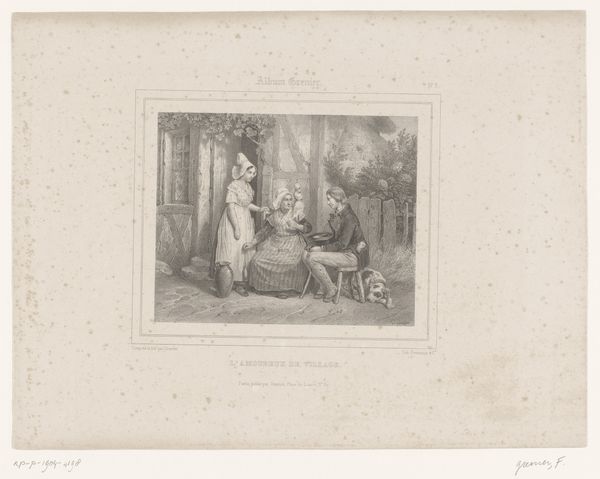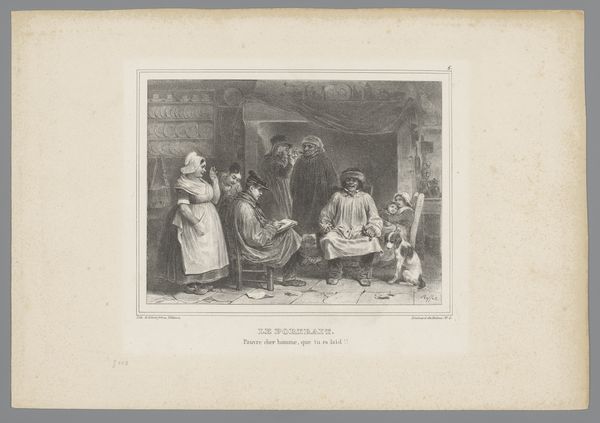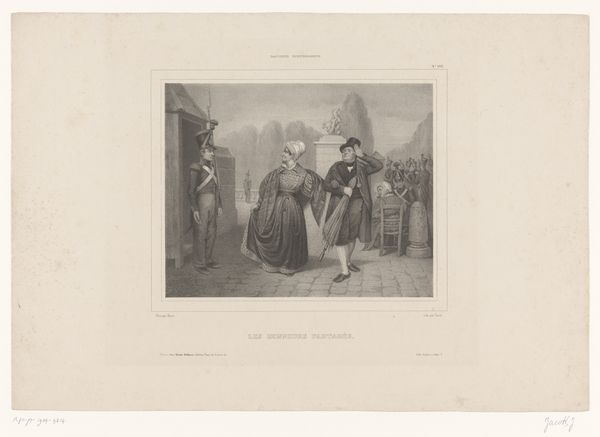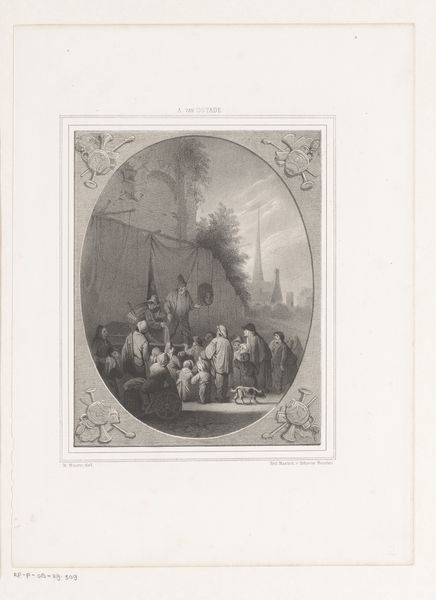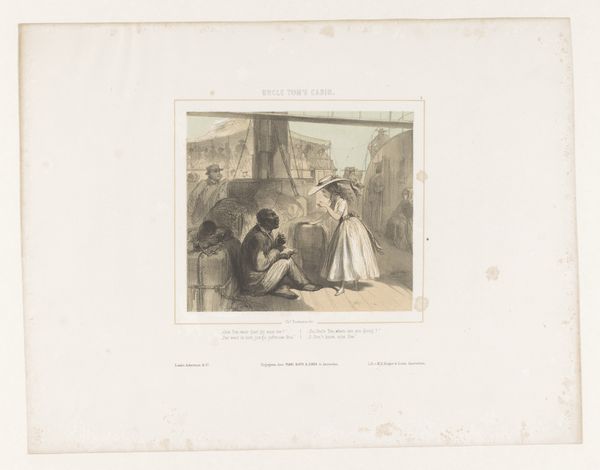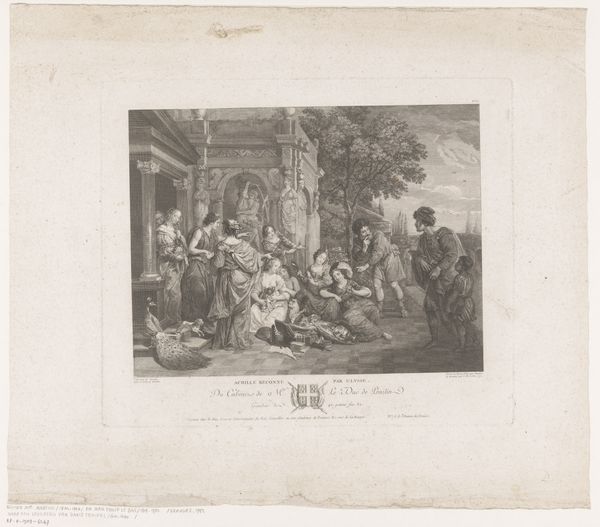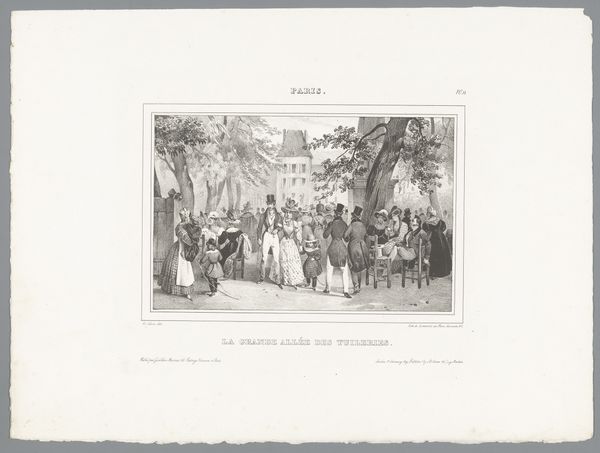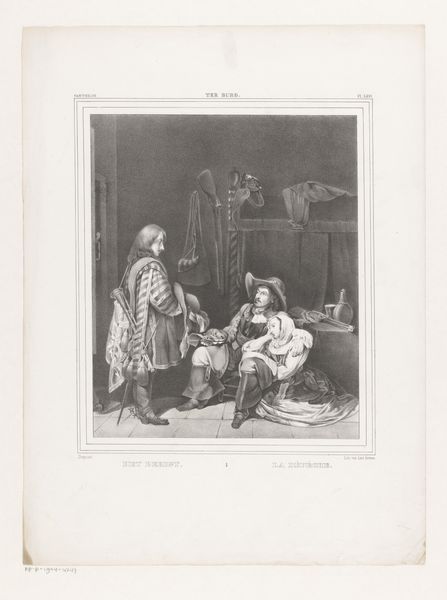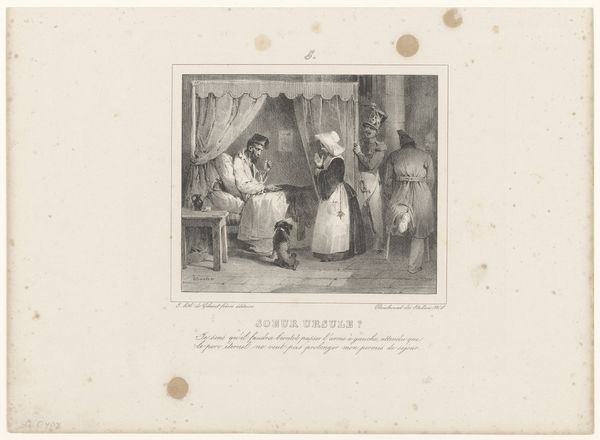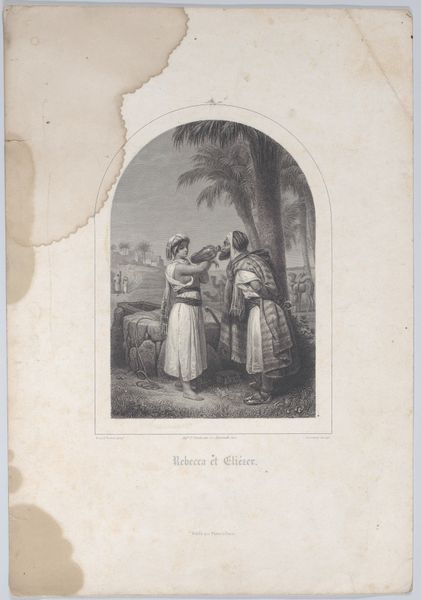
lithograph, print
#
mother
#
narrative-art
#
lithograph
# print
#
landscape
#
romanticism
#
genre-painting
#
realism
Dimensions: height 308 mm, width 448 mm
Copyright: Rijks Museum: Open Domain
Curator: Welcome. We’re standing before a lithograph by François Grenier, created around 1842. The work is titled "Mother Allowing a Small Child to Give Alms to a Beggar". Editor: It's a grayscale image with incredibly delicate textures. The way light defines each character pulls me right into this quiet street scene. There’s an undeniable somber tone. Curator: Indeed. As a lithograph, it’s important to consider the processes involved. Grenier would have drawn directly onto a stone with a greasy crayon, which allowed for the subtle gradations and fine lines that we see here. Think of the socio-economic implications of producing and distributing images like these for a wider audience. Editor: Absolutely. The composition is particularly striking; the artist's skillful deployment of contrasting values creates emphasis and visual rhythm. See how the darker tones of the beggar's figure contrast with the lighter dresses of the mother and child, almost suggesting a moral divide. Curator: Or perhaps that is Grenier reflecting on social stratification; the materials available, or the conditions necessary to produce the original. The mother and child's act of charity speaks to complex systems of social welfare. It may not simply reflect personal altruism, but a societal imperative to quell the threat of uprising through performative empathy. Editor: I'd add the architectural framework--the doorway behind the women; the crumbling brick wall and mill off in the distance to the left. How can we consider the architecture to play in framing this moment? Curator: We can see how printmaking allowed the subject to circulate to more than just those who might visit an elite art gallery. These are important documents, reflecting an expanding industrialized society, documenting those left behind. Editor: Looking closer, I am reminded of traditional biblical narratives. How those themes play into contemporary moments like Grenier captures. It is interesting to find a contemporary, romantic vision within a rapidly changing era. Curator: Well said. By thinking about both its production and representation, we gain insight into 19th-century social structures. Editor: And through careful visual reading, we recognize recurring compositional elements. That contrast reminds me that our insights rely both on understanding production and interpretation.
Comments
No comments
Be the first to comment and join the conversation on the ultimate creative platform.
